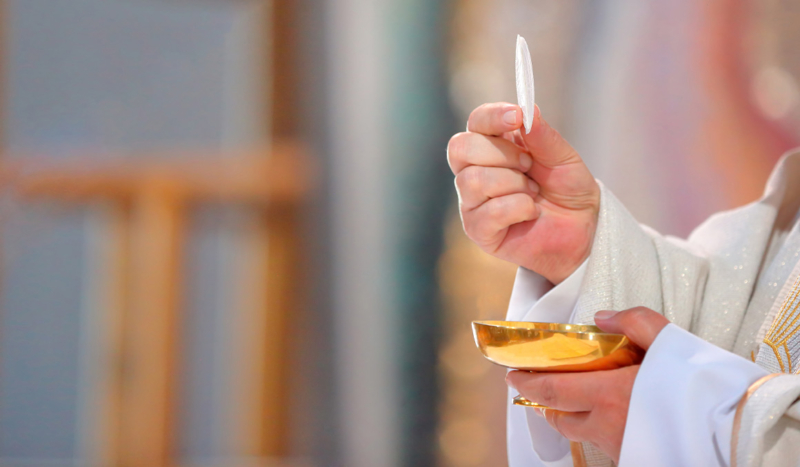
CV NEWS FEED // The bishop of Wheeling-Charleston, West Virginia, is instructing the faithful in his diocese to remain standing after the Lamb of God prayer during the Mass until receiving Communion, in affirmation of a local norm the Diocese’s former bishop, Bernard Schmitt, implemented in 2003.
“The posture during the Communion Rite, from the Our Father to the Communion Procession, reflecting the communal nature of our worship and our faith in the Lord’s True Presence in the Eucharist, should be the same for all: to stand,” Bishop Mark Brennan wrote on Jan. 2, 2025. “After receiving Holy Communion, the faithful may express their adoration and love for the Lord, whose Body and Blood they have received, in the manner they choose: to kneel or sit or to stand until all have received.”
Bishop Brennan explained that individuals have asked him to reimplement the norm of kneeling, which he stated “is the common pattern in the dioceses surrounding ours.” However, he said “there was no clear consensus” on the topic when he spoke with diocesan lay and priest leaders about it.
“If you consider the Rite of Communion,” he continued, “the posture at every point from the Our Father through the Sign of Peace and the words, ‘Lord, I am not worthy,’ to the moment when the faithful leave their pews to form the Communion Procession, is to stand.”
“Indeed, the normative posture for receiving Holy Communion in the United States is to stand, although no one will be denied the Eucharist who chooses to kneel,” he wrote, citing the General Instruction of the Roman Missal. “Kneeling after the Lamb of God, while traditional, actually breaks the continuous posture of the Communion Rite, even if only briefly.”
Bishop Brennan stated that he is leaving Bishop Schmitt’s decree in place because of the former bishop’s reasoning, “the greater consistency of posture in the Communion Rite if all stand,” and because Catholics in the state have stood after the Lamb of God prayer for the past 21 years.
“This is the posture our younger Catholics have always known,” he continued. “It also reflects in practice the measured liberty that the Latin Rite of the Church allows in some aspects of liturgical practice.”
Bishop Brennan requested that everyone in the Diocese obey his decision.
“I also urge you to see that, in the larger picture, the posture after the Lamb of God does not approach in importance the greater matters of Christ’s True Presence in the Eucharist,” he added, “our eagerness to bring his Gospel to others and the charity and justice we owe our neighbor – all of which the Eucharist strengthens us do.”
Bishop Brennan requested that this matter not become a large debate, citing Jesus’ words in the Gospel of Matthew (23:24), when our Lord warned against focusing on small matters over larger ones by likening this tendency to straining out a gnat and swallowing a camel.
“Or, as one of our sayings puts it: ‘Don’t make a mountain out of a mole hill.’ We have much more important things to do than debate the merits of standing or kneeling after the Lamb of God,” Bishop Brennan wrote. “We are called to serve the Lamb who was sacrificed for us to take away our sins and rose from the dead to give us new life. That is enough to engage our thoughts and energy, our time and talents.”

